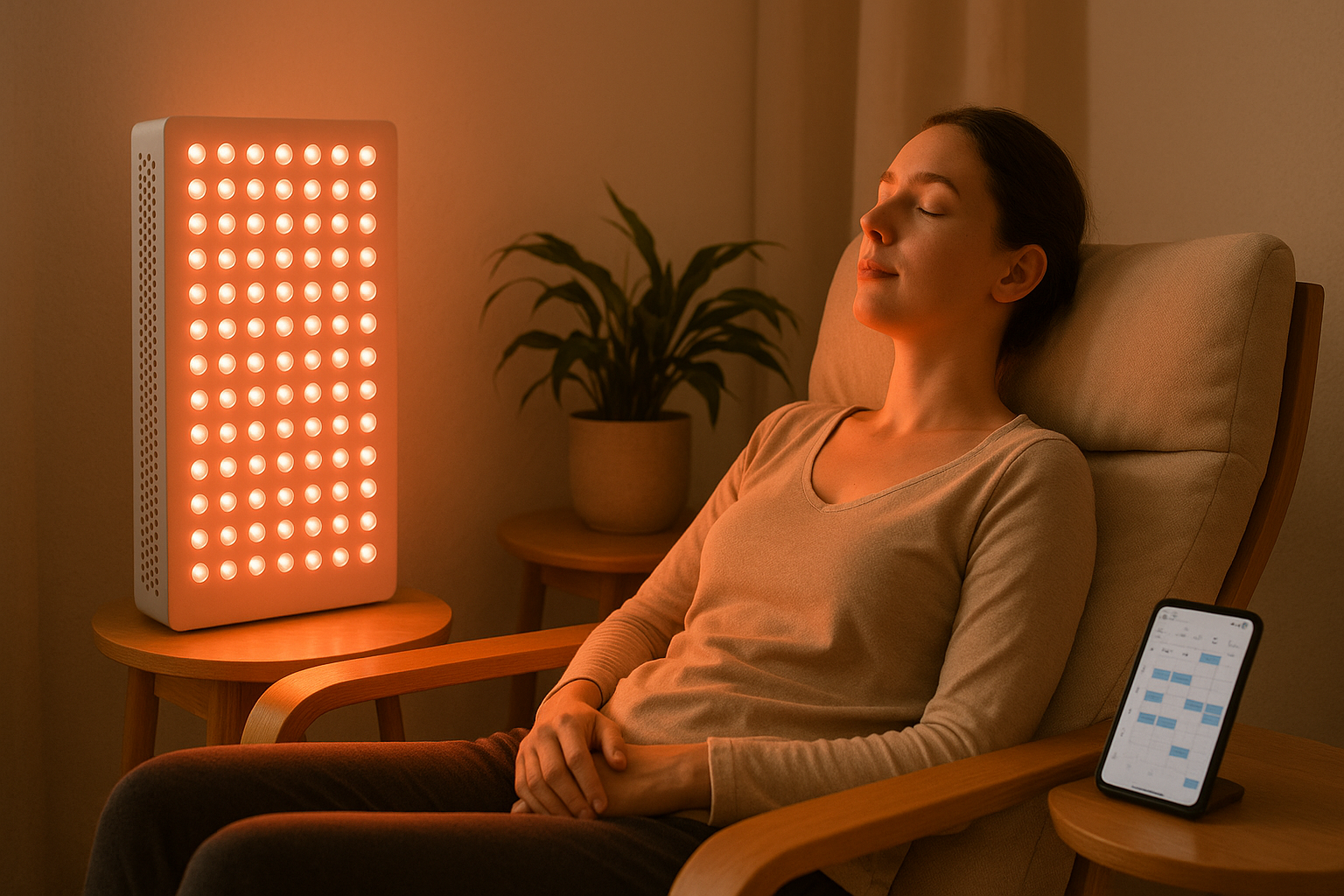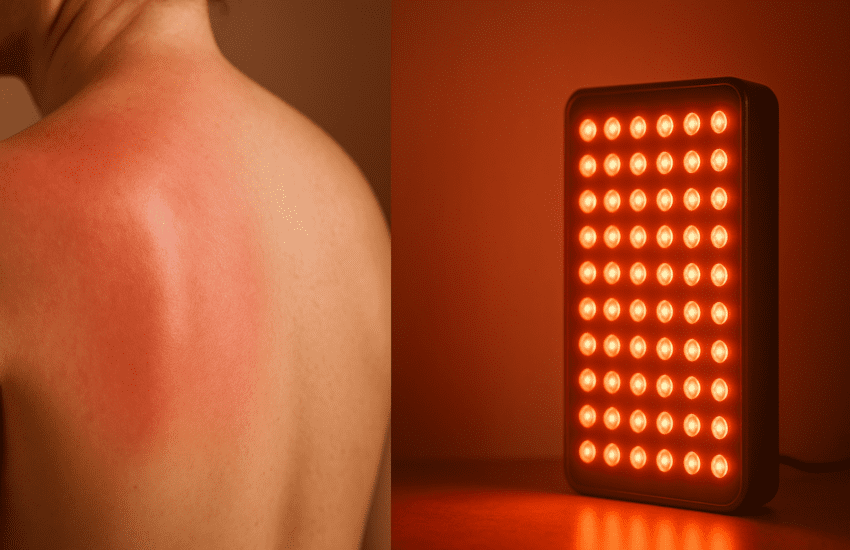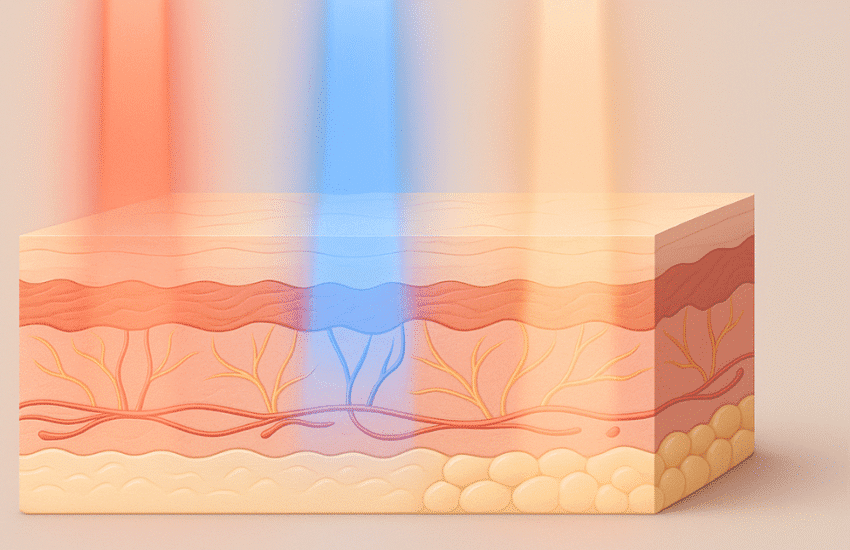How Often Can I Do Red Light Therapy? Safe Frequency Guide
Wondering how often you can dive into red light therapy?
It all depends on what you’re aiming for, the issue you’re tackling, and the device you’re using. Many folks start off doing daily sessions to kick things into gear—especially if this is your first time.
But not every situation calls for everyday use. Some goals actually see better results with just 2–3 sessions per week. I’ll walk you through different schedules so you can get the most out of your therapy without feeling like you’re burning money or time.
Recommended Red Light Therapy Frequency for Beginners
Starting red light therapy is a bit like tiptoeing into a cool pool before you dive in—it’s smart to ease in. Begin with short sessions of 3–5 minutes each day. That gives your cells a chance to get comfortable with photobiomodulation without feeling overwhelmed.
Pay attention to what your body tells you. You might notice a small boost in energy or fewer aches after just a few days.
Once you get used to those quick sessions, you can lengthen them a little before cutting back on how often you do them. Most manufacturers suggest daily use for the first 4–8 weeks so your cells can build up their energy reserves.
After that, see how you feel—if you’re still noticing improvements, you’re on the right track. Keep it simple: pick a time each day that works for you, treat it like brushing your teeth, and jot down any changes in a note on your phone.
Daily vs. Weekly Red Light Therapy Sessions
Finding your ideal rhythm with red light therapy is like watering a houseplant: too little and it won’t thrive, too much and you risk overdoing it.
For skin issues, pain management, or recovery support, daily sessions of 5–15 minutes usually hit the sweet spot. Think of it like giving your skin or muscles a little pep talk. If you’re aiming just to maintain general well-being, 3–5 sessions a week often work just fine. That way, you see steady results without needing to show up every single day.
Sometimes, when you’re in maintenance mode or dealing with milder concerns, 1–2 sessions per week can be enough to keep the benefits rolling. Remember, consistency beats intensity—regular, moderate sessions deliver better long-term results than sporadic, marathon treatments.
To figure out what suits you best, keep a simple log or use a wellness app so you can connect the dots between your session pattern and any improvements you see.
How Long Should Each Red Light Therapy Session Last?
The length of each session depends on what you’re treating and how deeply the light needs to reach. For most skin-related concerns, 5–10 minutes per area is often enough. Picture it like steeping a cup of tea—past a certain point, leaving the bag in doesn’t make the flavor stronger.
If joint pain or inflammation is your target, bump that up to around 10–15 minutes so the light can penetrate a bit deeper and spark cellular repair. And when you’re focusing on deep-tissue healing—say, recovering from a workout or injury—you may need 15–20 minutes per spot. Just know that going beyond 20 minutes usually doesn’t offer any extra payoff.
Professional clinic devices are typically more powerful, so they might ask you to do shorter sessions than your at-home device would. Always follow the instructions that come with your specific machine to get the best results.
Red Light Therapy Frequency for Specific Conditions
Different goals call for distinct schedules, much like how various plants need unique watering routines.
- Skin Rejuvenation: Think about daily sessions for 2–4 weeks to kickstart collagen production. Once you start seeing texture and tone improvements, scale back to 2–3 times a week to keep them going.
- Muscle Recovery: Aim for 3–5 sessions per week, ideally after your workouts when your muscles are primed to heal. Athletes often swear by this routine because it helps them bounce back faster between training days.
- Chronic Pain: Daily exposure tends to work best, building relief over time. Consistency is key here—gradual, cumulative benefits will help break the pain cycle.
- Hair Growth: Shoot for 3–4 sessions weekly so the light can stimulate hair follicles without overwhelming your scalp. Stick with it for several months to let those hair cells rev up.
- Sleep Improvement: Try daily sessions about 1–2 hours before bedtime. The red light can help reset your internal clock and nudge melatonin production into motion later in the evening.
If you’re using red light therapy for a medical condition, it’s always wise to loop your healthcare provider into the conversation. They can help you integrate it safely with any ongoing treatments.
Signs You’re Doing Too Much Red Light Therapy
Your body is pretty good at sending signals if you’re overboard:
- Skin Irritation: If your skin is unusually red or tender after a session, think of that as a caution flag. You might need to pull back a bit.
- Headaches or Eye Strain: Not wearing the proper goggles can leave you squinting or woozy. Always use protective eyewear that comes with your device.
- Trouble Sleeping: If you do sessions right before bed and suddenly find yourself tossing and turning, move them earlier in the day. Too much light too close to bedtime can throw off your sleep cycle.
- Plateauing Results: When you keep upping the frequency but don’t feel any extra benefits, your cells may have hit their processing limit. More isn’t always better.
- Feeling Drained: If sessions leave you feeling oddly fatigued or wiped out, that’s a sign your body needs a breather. Scale back and let your system recharge.
Creating Your Optimal Red Light Therapy Schedule
The trick to sticking with red light therapy is weaving it into things you already do. Pair your session with your morning coffee or your evening skincare routine—whatever feels natural. Think about the best time for your goals: a morning session can be a gentle energy boost, while an evening treatment can help you unwind. Just as sunlight in the morning wakes you up, red light in the evening can help you wind down.
Avoid hitting the same spot every single day—give areas at least 24–48 hours to complete the cellular repair process. Use a simple journal or an app to note down session dates, durations, and any changes you notice. Over time, this log becomes your roadmap, showing you which frequency and duration work best for you. Remember, everyone’s body is different: someone might thrive on brief daily sessions, while someone else gets the best results from longer, less frequent treatments.
Conclusion
Finding your perfect red light therapy schedule is part science, part personal experiment. Research often points to 10–15 minute sessions, 3–5 times a week, as a solid starting place. But in the end, your specific goals and how your body responds should guide the final plan.
Think of red light therapy like exercise—regular, moderate sessions build stronger results than occasional, intense sessions. Start conservatively, tweak bit by bit, and always listen to your body.
The beauty of red light therapy is how flexible it can be for changing health needs and busy lifestyles. Remember, results vary from person to person, and if you have serious medical concerns, chat with a healthcare professional before diving in.


